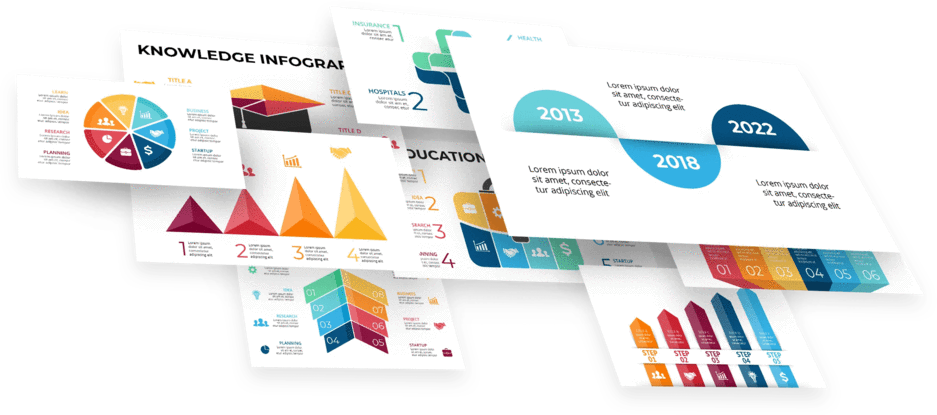Fishbone Diagram: What It Is & How It Is Created
Oct 04, 2022
To effectively solve a problem, you must understand its cause. As a result, students, researchers, and business leaders often turn to root cause analysis to understand the root cause of their problems.
The fishbone diagram is an excellent example of a root cause analysis tool. A well-drawn fishbone diagram will not only help you understand your problems. It will also ensure you don't waste valuable time and resources.
We will provide all the essential information about a fishbone diagram. You will learn about its usage, benefits, and how to create it.
What Is a Fishbone Diagram?
Also known as the Ishikawa or cause and effect diagram, a fishbone diagram visualizes cause and effect. Managers use it for identifying, brainstorming, and breaking down the possible causes of a problem or defect.
As its name suggests, the diagram looks like a fish's skeleton. The fish's head starts on the right and represents the problem, while the fish's bones extending to the left are the causes of the pain.
We design the bones in a way that splits the causes of the problem into different categories. The significant reason types are the ribs, while the root causes extend from the ribs. You can have as many classes as you need.
After being popularized by Kaoru Ishikawa in the 60s, fishbone diagrams are among the seven essential quality tools today. Also, they are used in many industries, but mainly in product design and quality control.
The Purpose of Fishbone Diagrams?
Unlike most problem-solving tools, the fishbone diagram isn't primarily used to identify the causes of current issues. Instead, companies use it to prevent problems.
Additionally, variation can hinder quality and efficiency in any organization. You should always follow a standard process for every product or service you deliver. Once you alter this process, you will also be changing the end product.
Use a fishbone diagram to figure out elements that may cause variations in your process and potentially contribute to problems in your product.
Here is a beautiful template for Greiner's growth model curve.
Factors Causing Variation.
As mentioned, a fishbone diagram can help you identify factors that can alter your process. Though these contributing factors are numerous, experts usually split them into the following categories:

Machine.
This contributing factor refers to the tools, computers, facilities, and equipment used for operation. These items may fail to deliver to perform as expected due to technical or maintenance issues.
Method.
This represents the process you follow to deliver a product. If your strategy isn't streamlined and standardized, it can result in a problem.
Material.
Material refers to the items you need to deliver your product. It consists of raw materials, consumables, and information. When you mismanage materials, it will affect the quality of your end product.
Measurement.
This refers to your KPIs, data, inspections, and other measures of your process. Inconsistencies in measurements can affect the quality of your output.
Workforce.
The workforce represents the people involved in your process. Your workforce needs the technical expertise and experience to consistently deliver quality products and services.
Mother Nature.
Mother nature represents the environmental factors affecting your business process and can be manageable and unmanageable. Examples of environmental factors include storms, landslides, earthquakes, etc.
The 6 Ms are primarily used in manufacturing, and you can add or remove factors depending on your unique situation. Attach them to the spine of your fishbone diagram and start brainstorming with your team to develop the possible root causes.
Additionally, the causes of variation differ in some industries. Hence, you may need different contributing factors if you aren't in the manufacturing industry.
For marketing, you will need the 8 Ps:
- Product or service
- Place
- Price
- Personnel
- Promotion
- Process
- Proof
- Performance
For the service industry, you will need the 5s:
- Systems
- Surroundings
- Suppliers
- Skills
- Safety
Check out this company profile presentation template.
How To Develop a Fishbone Diagram.
You can create a fishbone diagram for your business in four steps:

Step 1: Problem Statement.
Start your fishbone diagram by drafting your problem statement. Your team must agree on the problem statement, which must be clear. Clearly state how, when, and where the issue occurred.
Remember that your problem statement should go into the head of the fish (right-hand side of your screen or board). After drawing the fish's leader, you can draw a line to the left-hand side (the spine).
Step 2: Brainstorming Session.
Hold a brainstorming session with your team to identify the possible causes of the problem. You may analyze the earlier listed factors to see if they affect your process.
Attach a line to the spine (ribs) for each possible cause you find and label it.
Step 3: Identify the Root Causes.
The central part of your brainstorming session begins here. Your team should consider the root causes of the factors listed in the previous step.
Once you have root causes, attach them as branches to the ribs. The skeleton will look complete after this step.
Step 4: Analyze Your Structure.
After adding all the possible causes of the problem, it is time to analyze the diagram. Look at each potential cause closely to see if it truly affects your business. The five whys strategy will be helpful at this stage.
Benefits of Using Fishbone Diagrams.
Fishbone diagrams offer several benefits. We have listed some of them below:
- It clearly and logically displays cause-and-effect relationships
- It gives room for brainstorming
- It ensures that the team considers all the possible causes of a problem
- It helps to effectively solve issues by identifying their root cause
- It helps to identify problems in business processes
Download Free Fishbone Diagram Templates.
You don't need to struggle with a fishbone diagram maker before creating your fishbone diagram. Download a free fishbone diagram template from Simple Slides to save time and energy.
Frequently Asked Questions:
What is a fishbone diagram?
A fishbone diagram is an analysis tool that depicts the potential causes of a problem.
What are the six categories in a fishbone diagram?
The six categories in a fishbone diagram are workforce, method, machine, measure, material, and mother nature.
How does a fishbone diagram work?
A fishbone diagram mimics a fish's skeleton. The head represents the problem statement, while the remaining bones represent the possible causes of the pain.
Related Articles:
How to use a decision tree template
Get A Free Sample of Our Award-Winning PowerPoint Templates + University
Get A Free Sample of Our Award-Winning PowerPoint Templates + University
Join our mailing list to receive the latest news and updates from our team.
Don't worry, your information will not be shared.
We hate SPAM. We will never sell your information, for any reason.





